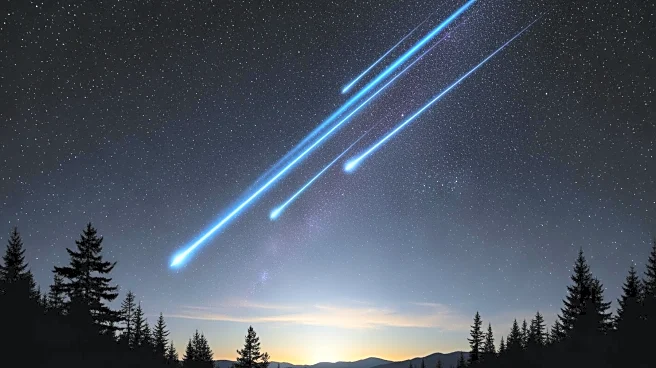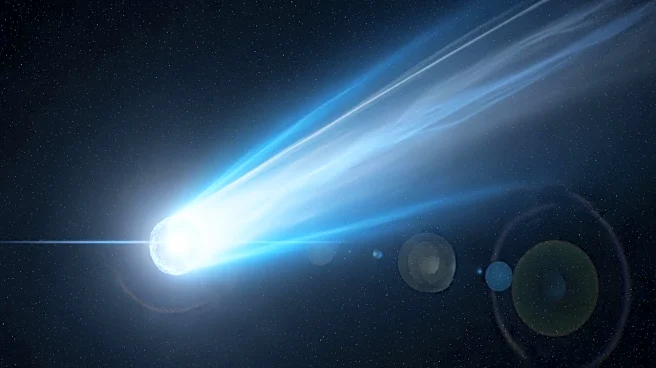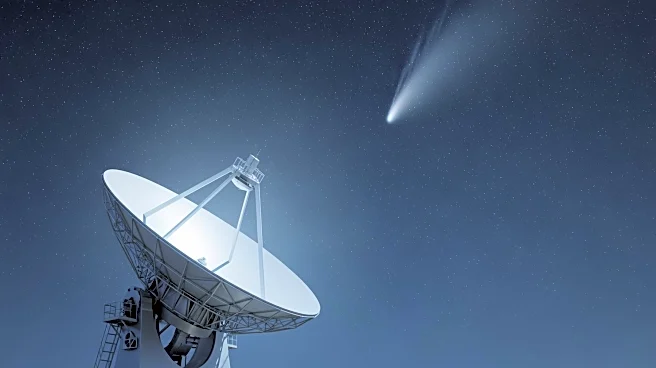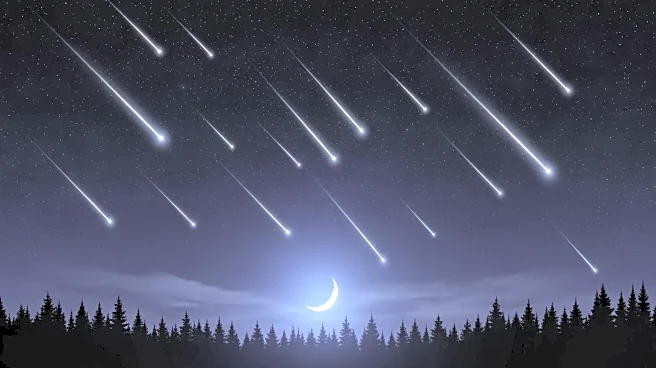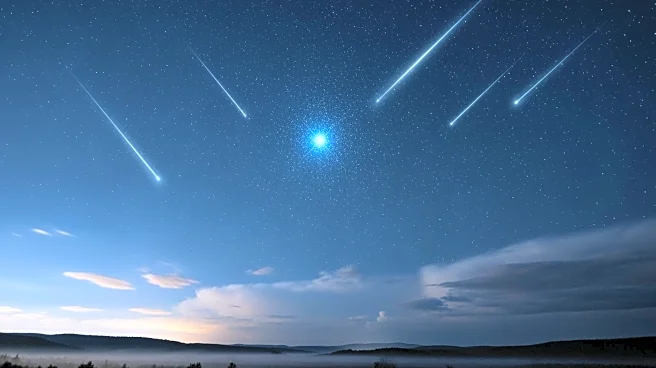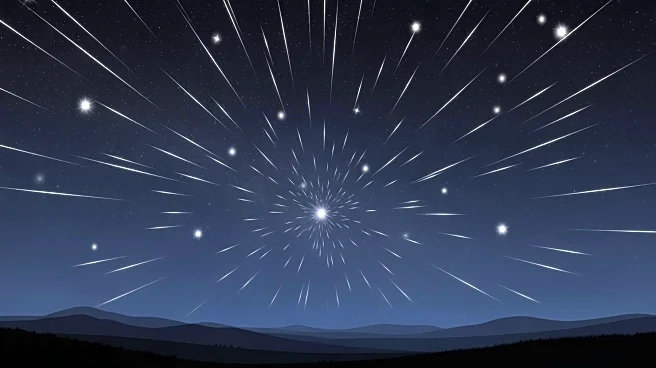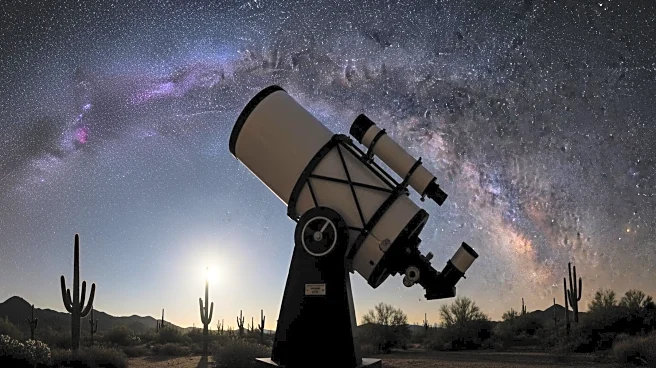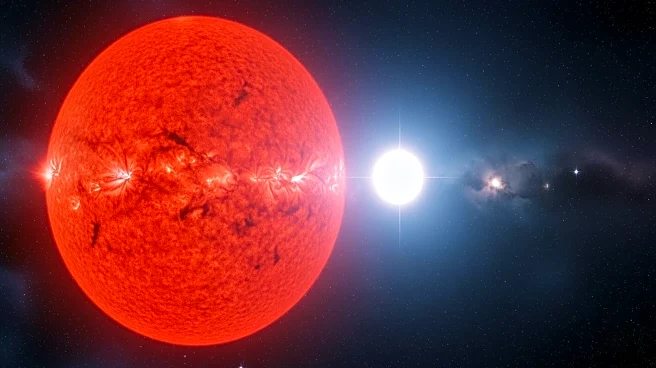What's Happening?
The annual Leonid meteor shower is set to peak on the night of November 16th into the early hours of November 17th, offering a visual spectacle of 10-15 meteors per hour under dark skies. This celestial
event is caused by Earth's passage through the debris left behind by the comet 55P/Tempel-Tuttle. Meteors will radiate from the constellation Leo, providing an opportunity for astronomy enthusiasts to witness shooting stars. The shower stretches from November 3rd to December 2nd, allowing observers to connect with the cosmic trails left by ancient comets.
Why It's Important?
The Leonid meteor shower is significant for both amateur and professional astronomers as it provides a chance to observe the remnants of cometary debris interacting with Earth's atmosphere. This event not only offers a visual treat but also serves as a reminder of Earth's journey through space and its interaction with cosmic elements. The shower's visibility from the constellation Leo allows for educational opportunities in understanding celestial navigation and the history of comets. It also fosters public interest in astronomy and encourages outdoor activities centered around stargazing.
What's Next?
As the Leonid meteor shower continues through December 2nd, astronomy clubs and enthusiasts are likely to organize viewing events to maximize the experience. Educational institutions may use this opportunity to engage students in learning about meteor showers and the science behind them. The event could also inspire further research into cometary debris and its impact on Earth's atmosphere. Observers are advised to find locations with minimal light pollution for the best viewing experience.
Beyond the Headlines
The Leonid meteor shower highlights the interconnectedness of celestial events and human curiosity. It serves as a bridge between scientific exploration and cultural appreciation of the night sky. The event underscores the importance of preserving dark sky areas to ensure future generations can enjoy such natural phenomena. Additionally, it raises awareness about the broader implications of space debris and its potential impact on Earth's environment.
